NEW DEVELOPMENTS IN DAHLIAS 2006
The constant development of the flower continues with breeders finding new
characteristics to work on.
Ivor Kitchener has spent a few years working on collerettes and this year has
found some types that were grown up to the mid 1900ís but fell out of favour
with growers and gradually disappeared. Ivorís breeding program has generated
more of these older types, multi-layered or double layered collerettes. They
will be available from the National Collection soon6, so the opportunity
will exist for other raisers to use these characteristics in their gene pool to
further enhance these types, or generate some more unusual blooms. Three of Ivorís new double layered varieties are pictured on the
Collerette page.
In my own attempts to develop fimbriated varieties, I have
now had a few where the end of the petal is serrated, giving an overall bloom
appearance similar to a carnation. In Holland, similar varieties have also
appeared, but with bigger blooms than my own. The blooms provide a fascinating
deviation from the more normal forms of the flower and are set to provide garden
flowers with their own beauty.
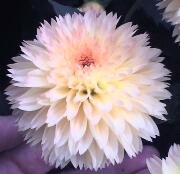 |
|
Carnation Flowered dahlia |
It had always been thought that dahlias would have no
scent although several people had reported that they had found a variety with a
scent. Wayne Holland of British Columbia took the bul by the horns and did
some work to try to produce a scented bloom. He eventually succeeded with
an open centred variety which had scnted pollen as the disk florets opened.
The variety was called Hy Scent and this has since been used to generate other
scented flowers. Les Jackson of Carlisle has produced he first known
scented collerette he has called Hillcrest Fragrant, pictured on the
Collerette page. Hopefully more will follow and
maybe some that are double flowered.
Tom McLelland has devote several years to the breeding of true miniature cactus
and semi-cactus varieties and has a good number of excellent varieties to his
name. A by-product of the breeding however is the development of spoon shaped
petals (as found in some Chrysanthemum varieties. Unfortunately he has been
unable to take it as far as he would like because it would impact his time and
ability to continue the miniature work. I have included Tomís notes on this
breeding work and make a plea for someone to try to find the time and space to
continue this development. If you would be prepared to continue this work,
please send a message to
me and I will put you in contact with Tom.
Spoon Petals in Dahlias
by
T. McLelland - 21/11/2005
Amongst the seedlings set out in the garden in 1997 one, a seedling from an
Australian variety, FAIRY QUEEN, produced flowers containing a substantial
number of petals with "spoon" formation. Pollen parent was not known. The form
is well known in chrysanthemums and in Osteospermums but it was the first time I
had seen it in a dahlia. Unfortunately despite my best efforts the tuber did not
survive to propagate the following year and that seemed to be the end of that.
In correspondence Swami Vinayananda indicated that he too had seen such form as
a sport but it had not survived. Also in the Indian Dahlia Society Annual for
1997 Dr. P.K. Das mentions spoon form in the context of two sports, one from
KELVIN GD and one from KELVIN ROSE GD but neither is known to have survived.
But life is full of surprises. In season 2000 six seedlings appeared with the
same condition but only on a relatively small number of petals (from 5% of the
outermost petals to about 15% in an odd bloom. All were grown from seed obtained
at random from WESTON DOVE. At the time I did have a concern that the effect
might have been due to chemical imbalance since the plot had been quite heavily
fertilised before planting out. I mentioned this to Dr. Gareth Rowlands who was
of the opinion that the effect was more probably due to genetic change and this
appears to be confirmed with later results. Grown on in 2001 in a block to
hopefully achieve cross-pollination but also assisted by hand when opportunity
allowed the rather haphazard approach produced eighteen seeds. Of these twelve
germinated and were grown on in 2002.
Only one plant with yellow flowers exhibited the effect on a small number of
petals. This was retained as S02/02. Again a random seedling from Weston Sunup
appeared with petals somewhat similar to anemone centred dahlias but with some
spoon petals on the outer florets. This has been retained as seedling SI5/02. No
seed was collected in 2002.
Only S02/02 and S 15/02 were grown again in 2003. Yet again in the seedling bed
there appeared two seedlings exhibiting the spoon characteristic; one, white in
colour, had a few on the outer petals and the other, yellow, initially across
the whole flower and later more variable but not less than 50% of the total
florets. The seed parent was WESTON DOVE. Disaster struck when all photographs
were lost due to camera failure and yet again no seed was obtained. In storage
S02/02 was lost. The others, S 15/02, SO 1/03 and S02/03 were all grown
together, in a block, in 2004. S02/03 appeared virused and was destroyed. From
the other two six seeds were obtained.
Of the six seeds obtained only three were successfully germinated in 2005 and
these were grown together with the two parents. Two of the seedlings were
nondescript singles and discarded. The other was fully double, orangy pink in
colour with about 15% of petals showing the spoon form. Also in the seedling
bed, yet again with WESTON DOVE as seed parent, two plants appeared with spoon
form on the outer petals and have been retained hopefully to be grown with the
others in 2006. To add to this will be what can be germinated from twelve seeds
obtained from S01/03.
Thus far my approach has been somewhat casual and results are far removed from
what we regard as exhibition standard. I am not aware if results like these have
been obtained by others or indeed even if the form exists elsewhere. One can
only follow its progress to find what the possibilities are and perhaps others
with an interest in the flower may be persuaded to further its development. It
will require some concentrated effort over time to develop the form to be of
interest to the public. But who has the time and energy? The alternative is to
consign it to the compost heap.
|
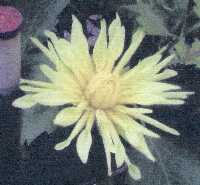 |
|
First Indications - Year 2000 |
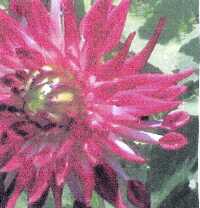 |
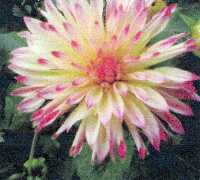 |
|
S02/02 |
S15/02 |
| |
|
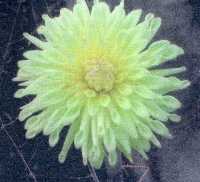 |
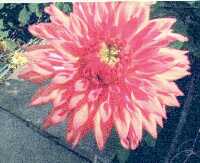 |
|
S01/03 |
S01/05 |
Last updated
February 26, 2012
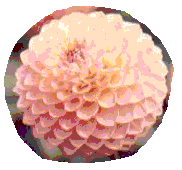 THE GROWING WORLD OF DAHLIAS
THE GROWING WORLD OF DAHLIAS![]()



